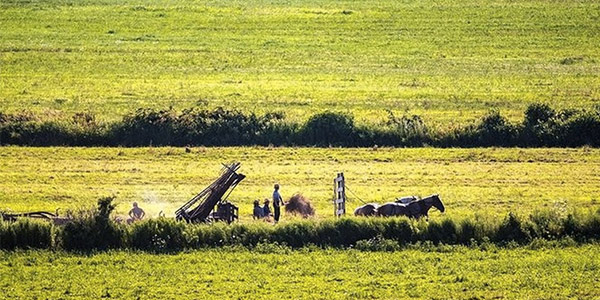The New York State Board on Electric Generation Siting and the Environment on Wednesday overrode local opposition to approve the 340-MW Alle-Catt Wind Farm south of Buffalo, the largest wind farm to pass Article 10 siting review in the state (17-F-0282).
The order authorized the developer, Invenergy subsidiary Alle-Catt Wind Energy, to build and operate up to 116 wind turbines with associated infrastructure on approximately 30,000 acres spread across Allegany, Cattaraugus and Wyoming counties. The project had been under review since December 2017.
“In keeping with Gov. Andrew M. Cuomo’s ambitious goals for carbon reduction and for a clean-energy economy, we must develop the clean energy resources in New York state needed to help all New Yorkers,” said Siting Board Chair John B. Rhodes, who also serves as chair of the state’s Public Service Commission.
New York’s Climate Leadership and Community Protection Act (A8429), signed into law last July, mandates that 70% of electricity come from renewable resources by 2030 and that electricity generation be 100% carbon-free by 2040. (See Cuomo Sets New York’s Green Goals for 2020.)
Amish Outreach
Former PSC Commissioner Gregg Sayre, now serving as administrative law judge for the Department of Public Service, presented to the Siting Board “three hotly contested issues in this case: the outreach to the Amish community, whether the project is a beneficial addition to the state’s generation capacity and compliance with local laws.”
The towns of Freedom and Farmersville took the position that the project should be rejected because there was ineffective outreach to the Amish community in Farmersville.
“There is a separate Amish community in another town, some members of which signed participating leases, but no one in the Farmersville community signed,” Sayre said. “The draft order before you notes that in addition to the usual meetings, mailings and newspaper notices, Alle-Catt met face-to-face with members of the Farmersville community at one of their residences and discussed the project and took concerns raised by the Amish representatives.”
Another argument was that every Amish household is effectively a church, as they regularly host worship services, but DPS examiners rejected that as unpersuasive, because a home would only host such a service, on average, once in 10 months, Sayre said.
The Concerned Citizens Coalition (CCC) argued that the project will not be a beneficial addition to the state’s energy profile because transmission bottlenecks between upstate and downstate will, if not resolved in the future, constrain its capacity and cause its output to merely displace the output of other upstate wind projects.
The Siting Board rejected that position.
The order “acknowledges there are transmission constraints that will need to be addressed in the future but determines that the need to add transmission in the future is not a reason to reject new renewable energy projects now,” Sayre said. “Requiring transmission to be built before a generation project is approved would be putting the cart before the horse.”
Those constraints are being addressed in compliance with the recently enacted Accelerated Renewable Energy Growth and Community Protection Act, which provides for expedited transmission upgrades, Sayre said. (See NY Renewable Supporters Push for New Siting Agency.)
State Power and Symbols
“One of the most hotly contested issues in this proceeding is the application of the local laws … because it’s very complicated,” Sayre said.
“Under the statute, the Siting Board applies substantive local laws to projects but may decline to apply any local law provisions that it finds to be unreasonably burdensome, with the applicant bearing the burden of proof,” Sayre said. “In this case, the local laws in the towns of Freedom and Farmersville have changed a number of times, complicating the situation.”
The Siting Board in effect sided with the developer, which responded to CCC’s opposition to exceptions by arguing that the towns in question had misinterpreted the statute as “an open-ended authority in municipal legislative bodies to adopt laws that become applicable to projects when and as adopted.”
DPS Chief Administrative Law Judge Dakin Lecakes presented the environmental review, which detailed the impacts of the project on various wildlife over its 30-year lifespan, as well as impacts on people using the state forest lands abutting the project.
For example, a setback of 1.1 times tip height will result in compliance with the 45-decibel sound limit for public lands; General Electric’s 3.6-137 turbine has a tip height of 585 feet, which makes for a setback of 643.5 feet.
Following definitions set by the U.S. Fish and Wildlife Service and the state Department of Environmental Conservation, the order approved various curtailment strategies and mitigation plans for endangered species such as the bald eagle and the northern long-eared bat.




